In the annals of baseball history, few pitchers command as much reverence and admiration as Addie Joss, whose name is synonymous with excellence on the mound. Among the myriad statistics that encapsulate his legendary career, one figure stands out as a testament to his unparalleled mastery of the pitching craft: his Earned Run Average (ERA).
Renowned for his pinpoint control, devastating slow curveball, and unwavering competitive spirit, Joss left an indelible mark on the sport with his remarkable ERA. This introductory paragraph sets the stage for a closer examination of Addie Joss’s ERA, a statistic that underscores his enduring legacy as one of baseball’s greatest pitchers.
Table of Contents
The ERA Definition
Baseball, often referred to as America’s pastime, is a sport rich in tradition, strategy, and statistics. Among the myriad of metrics used to evaluate player performance, one of the most crucial for pitchers is Earned Run Average, commonly abbreviated as ERA. As passionate baseball enthusiasts, we find delving into the intricacies of ERA both enlightening and essential for appreciating the artistry of pitching.
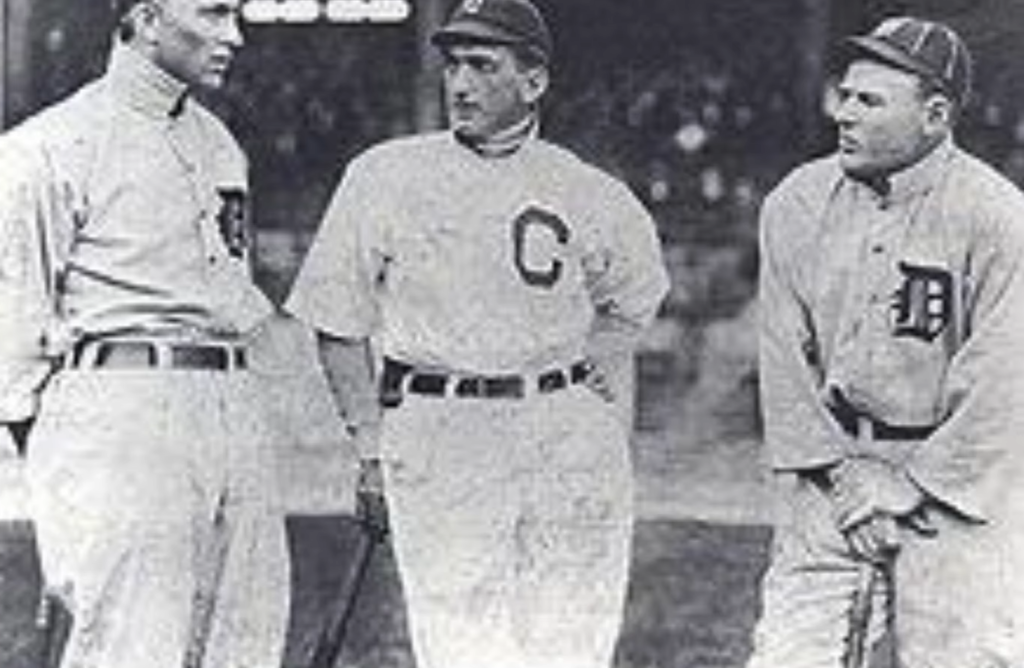
To calculate ERA, one must first understand the distinction between earned and unearned runs. Earned runs are those for which the pitcher is deemed responsible, typically resulting from hits, walks, or errors committed while the pitcher is on the mound. Unearned runs, on the other hand, occur due to defensive errors or other extenuating circumstances and are not factored into a pitcher’s ERA.
The formula for ERA is straightforward yet powerful:
ERA= Innings Pitched/Earned Runs ×9
This formula normalizes the number of earned runs a pitcher allows by scaling it to a standard nine-inning game, providing a fair comparison across different pitchers and games of varying lengths [2].
ERA serves as a crucial benchmark for evaluating pitching performance across different eras, teams, and leagues. A low ERA is indicative of a pitcher’s ability to consistently stifle opposing offenses, while a high ERA may suggest struggles with control, velocity, or pitch effectiveness.
However, ERA alone does not provide a comprehensive assessment of a pitcher’s skill set. Context is essential when interpreting ERA, as factors such as ballpark dimensions, defensive prowess, and run support from the offense can influence a pitcher’s statistics. A pitcher who consistently faces formidable opponents or pitches in hitter-friendly ballparks may have a higher ERA despite performing admirably.
Moreover, ERA does not account for the quality of contact allowed by a pitcher. A pitcher who induces weak ground balls and pop-ups may have a lower ERA than a pitcher who gives up hard-hit line drives, despite both allowing the same number of earned runs [3]. Advanced metrics such as Fielding Independent Pitching (FIP) and Expected Fielding Independent Pitching (xFIP) attempt to address this limitation by focusing solely on outcomes within a pitcher’s control, such as strikeouts, walks, and home runs allowed.
Despite its limitations, ERA remains a cornerstone of baseball analytics and a valuable tool for assessing pitching performance. It provides a tangible measure of a pitcher’s ability to execute pitches, command the strike zone, and keep opposing hitters off balance. Over the course of a long and grueling season, maintaining a low ERA can be a source of pride for pitchers and a testament to their dedication, skill, and resilience.
ERA also plays a pivotal role in historical comparisons and career evaluations. Through the lens of ERA, baseball fans can appreciate the greatness of past legends such as Walter Johnson, Sandy Koufax, and Bob Gibson, who consistently dominated opposing hitters and posted remarkable career ERAs that stand the test of time.
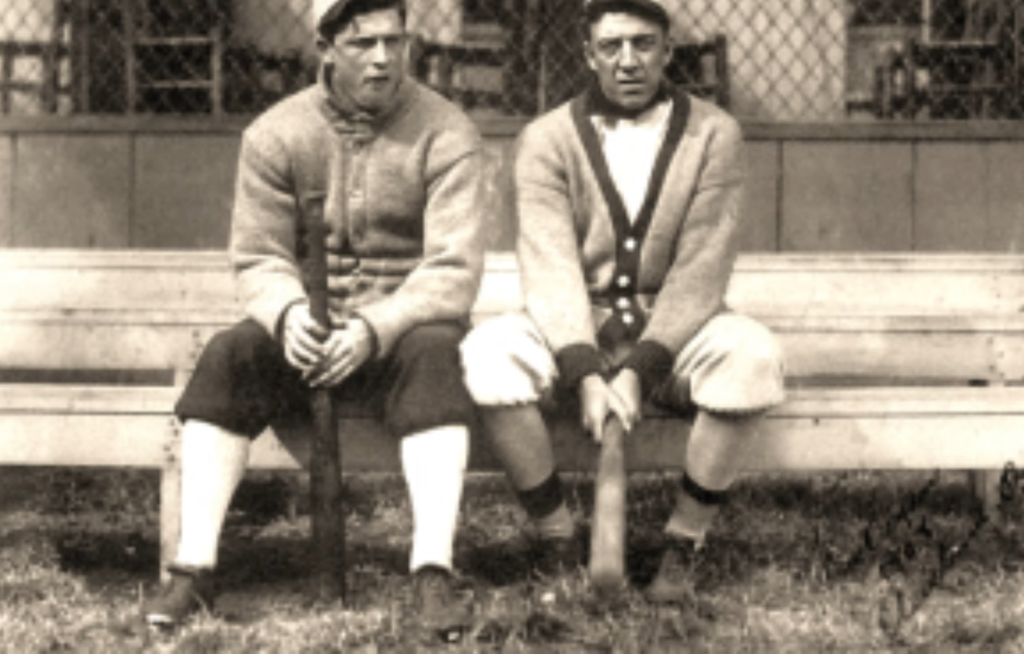
The Importance of Using ERA:
- Measuring Pitching Effectiveness:At its core, ERA provides a snapshot of a pitcher’s effectiveness in preventing opposing teams from scoring runs. By quantifying the average number of earned runs conceded per nine innings pitched, ERA offers a clear and concise evaluation of a pitcher’s performance. In a sport where every run matters, identifying pitchers with low ERAs can be the difference between victory and defeat;
- Informing Pitching Strategy: ERA serves as a guiding light for coaches and managers when making critical pitching decisions. Whether determining pitching rotations, bullpen usage, or defensive alignments, understanding the ERA of each pitcher on the roster informs strategic choices aimed at maximizing the team’s chances of winning. A thorough analysis of ERA allows teams to deploy pitchers strategically, matching their strengths against the weaknesses of opposing lineups;
- Evaluating Player Performance: For scouts, coaches, and front-office executives, ERA is a vital tool for evaluating player performance and potential. Whether assessing prospects in the minor leagues or weighing the merits of trades and free-agent signings, ERA provides valuable insights into a pitcher’s consistency, durability, and adaptability. By considering a pitcher’s ERA alongside other metrics and contextual factors, teams can make more informed personnel decisions aimed at improving their roster;
- Comparing Across Eras and Leagues: ERA serves as a universal language that enables comparisons across different eras, leagues, and playing conditions. Whether analyzing the dominance of pitchers from bygone eras or evaluating the performance of contemporary hurlers, ERA provides a standardized measure that facilitates meaningful comparisons. This historical perspective enriches the narrative of baseball, allowing fans to appreciate the evolution of pitching strategy and the enduring excellence of legendary pitchers;
- Fostering Competition and Excellence: In the competitive landscape of professional baseball, ERA serves as a benchmark of excellence and a source of motivation for pitchers striving for greatness. A low ERA is not only a point of pride for individual pitchers but also a testament to their dedication, skill, and resilience. By setting lofty goals and striving to outperform their peers, pitchers contribute to the perpetual quest for excellence that defines the spirit of the game [4];

ERA Stat Pros:
- Simplicity: Earned Run Average (ERA) is a straightforward statistic that provides a quick snapshot of a pitcher’s performance. It’s easy to calculate and easy to understand, making it accessible to fans, players, coaches, and analysts alike;
- Historical Relevance:ERA has been a staple of baseball statistics for over a century, providing a historical context that allows for meaningful comparisons across different eras and generations of players. This historical perspective enriches the narrative of the game and allows fans to appreciate the evolution of pitching prowess over time;
- Team Performance Indicator:ERA serves as an indicator of team performance, reflecting the collective efforts of a pitching staff in preventing opposing teams from scoring runs. Teams with low ERAs tend to be more successful, as strong pitching often correlates with victories on the field;
- Pitcher’s Impact:ERA directly measures a pitcher’s impact on the game by quantifying their ability to limit opposing offenses and keep runs off the scoreboard. Pitchers with low ERAs are highly valued for their ability to consistently perform at a high level and give their team a chance to win;
- Strategic Insights: Coaches and managers use ERA to make strategic decisions regarding pitching rotations, bullpen usage, and defensive alignments. By analyzing pitchers’ ERAs alongside other metrics and contextual factors, teams can tailor their strategies to maximize their chances of success on the field;
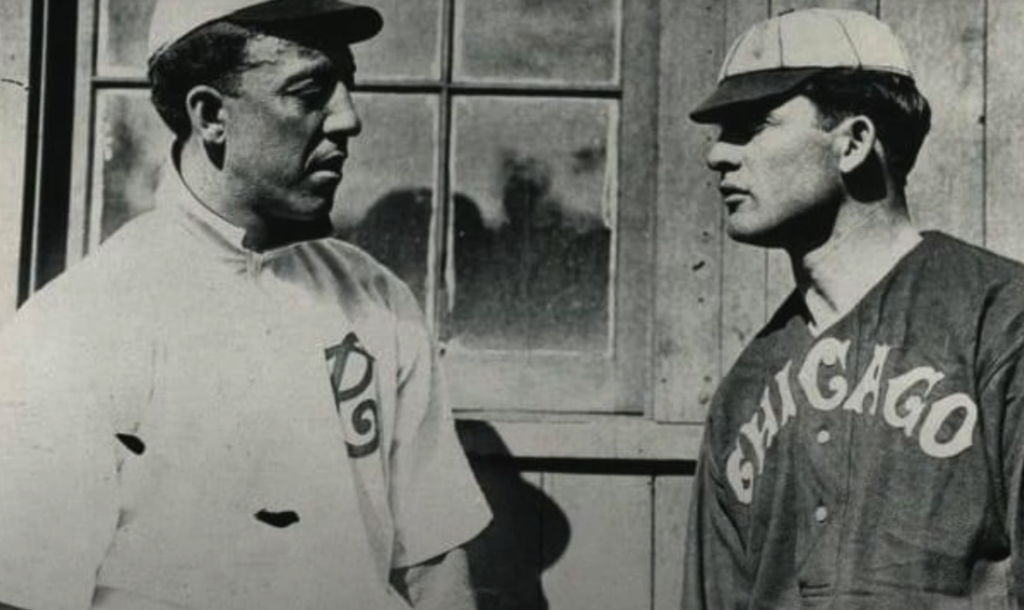
ERA Stat Cons:
- Dependence on Defense: ERA is influenced by the quality of a pitcher’s defense, as errors and defensive miscues can result in unearned runs that inflate a pitcher’s ERA unfairly. As a result, ERA may not always accurately reflect a pitcher’s individual performance and can be skewed by factors beyond their control;
- Park Factors:The ballpark in which games are played can significantly impact a pitcher’s ERA. Pitchers in hitter-friendly ballparks may have higher ERAs compared to pitchers in pitcher-friendly ballparks, even if their performances are comparable. This discrepancy makes it challenging to make direct comparisons between pitchers based solely on ERA;
- Small Sample Size: In baseball, small sample sizes can lead to unreliable statistics, and ERA is no exception. A few bad outings or a string of bad luck can inflate a pitcher’s ERA over a short period, masking their true abilities. It’s essential to consider ERA in the context of a larger sample size to get a more accurate assessment of a pitcher’s performance;
- Limited Scope:ERA focuses solely on runs allowed and does not account for other aspects of pitching performance, such as strikeouts, walks, and home runs. While ERA provides valuable insights into a pitcher’s ability to prevent runs, it may not capture the full spectrum of their skills and tendencies on the mound;
- Contextual Factors:ERA does not consider contextual factors such as run support from the offense, game situations, and quality of opposition. A pitcher with a low ERA may receive strong offensive support from their team, while a pitcher with a higher ERA may pitch effectively but receive little run support. This lack of context can obscure the true impact of a pitcher’s performance on their team’s success;
Addie Joss’ Career:
Early Life And College Career
Addie Joss, a name etched in baseball lore, remains a revered figure in the annals of the sport, celebrated for his remarkable career marked by both triumph and tragedy. As a devoted fan of baseball history, I find myself captivated by the story of Addie Joss, from his humble beginnings to his enduring legacy on the diamond.
Born on April 12, 1880, in Woodland, Wisconsin, Adrian “Addie” Joss discovered his love for baseball at a young age [5]. Growing up in a small town, he honed his skills on makeshift fields and sandlots, displaying a natural talent for the game that would soon propel him to greatness. Despite lacking the resources and infrastructure of larger cities, Joss’s passion and determination set him apart from his peers, foreshadowing a future filled with triumphs on the diamond.
Joss’s journey to baseball stardom took a pivotal turn during his college years at the University of Wisconsin-Madison. As a standout pitcher for the university’s baseball team, he showcased his exceptional talent and garnered attention from professional scouts. His collegiate career not only provided a platform to showcase his skills but also instilled in him a sense of discipline, perseverance, and sportsmanship that would serve as the foundation for his future success.
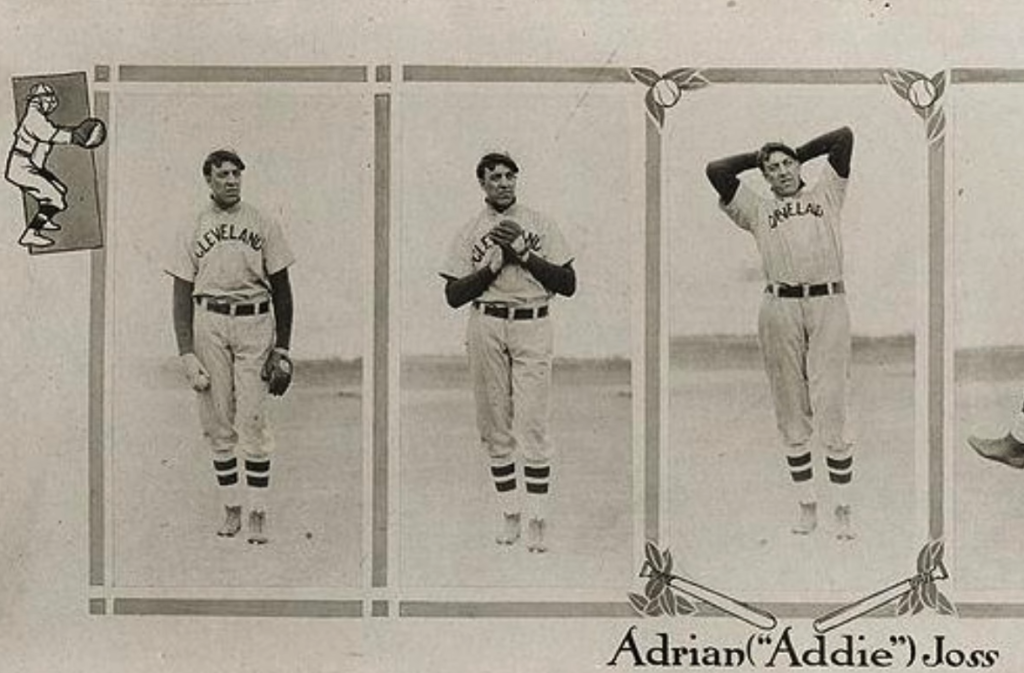
During his time at Wisconsin-Madison, Joss caught the eye of scouts from the Cleveland Bronchos (later known as the Cleveland Naps), a professional baseball team in the American League. In 1902, at the age of 22, Joss made his major league debut with the Cleveland Bronchos [6], marking the beginning of a storied career that would leave an indelible mark on the history of the game.
Major League Career:
Cleveland Bronchos/Naps (1902–1907)
Addie Joss burst onto the Major League scene in 1902, making his debut with the Cleveland Bronchos, later renamed the Naps. From the outset, Joss showcased his exceptional talent and poise on the mound, quickly establishing himself as one of the premier pitchers in the American League. Armed with a devastating slow curveball and pinpoint control, Joss became a force to be reckoned with, striking fear into the hearts of opposing batters.
During his tenure with the Naps, Joss compiled an impressive resume, notching three 20-win seasons and etching his name in the record books with two career no-hitters, including a perfect game against the Chicago White Sox in 1908. His remarkable consistency and dominance on the mound earned him widespread acclaim and admiration from fans, players, and pundits alike.
1908 Season
The 1908 season proved to be a watershed moment in Joss’s career, as he reached the pinnacle of pitching excellence with his historic perfect game against the White Sox on October 2nd. In front of a raucous crowd at League Park, Joss delivered a masterful performance, retiring all 27 batters he faced to etch his name into baseball immortality [7]. His flawless outing solidified his status as one of the greatest pitchers of his era and endeared him to fans in Cleveland and beyond.
Final Years with Naps (1909–10)
Despite his unparalleled success on the field, Joss’s career was tragically cut short by illness and untimely death. In 1909, Joss’s health began to deteriorate rapidly as he battled the effects of tuberculous meningitis, a devastating disease that would ultimately claim his life. Despite his declining health, Joss continued to pitch with remarkable courage and determination, refusing to let his illness define him or dampen his competitive spirit.
In his final seasons with the Naps, Joss displayed remarkable resilience and fortitude, inspiring his teammates and fans with his unwavering dedication to the game he loved. Though his physical strength waned, his passion for baseball remained undiminished, serving as a testament to his unwavering commitment to excellence.
Benefit Game
In a poignant display of solidarity and support, the baseball community rallied around Joss during his final days, organizing a benefit game to raise funds for his medical expenses and provide financial support to his family. On July 24, 1910, a crowd of over 15,000 fans gathered at League Park to pay tribute to Joss and honor his contributions to the game. The benefit game served as a fitting tribute to a man whose impact transcended the diamond, touching the lives of all who had the privilege of knowing him.
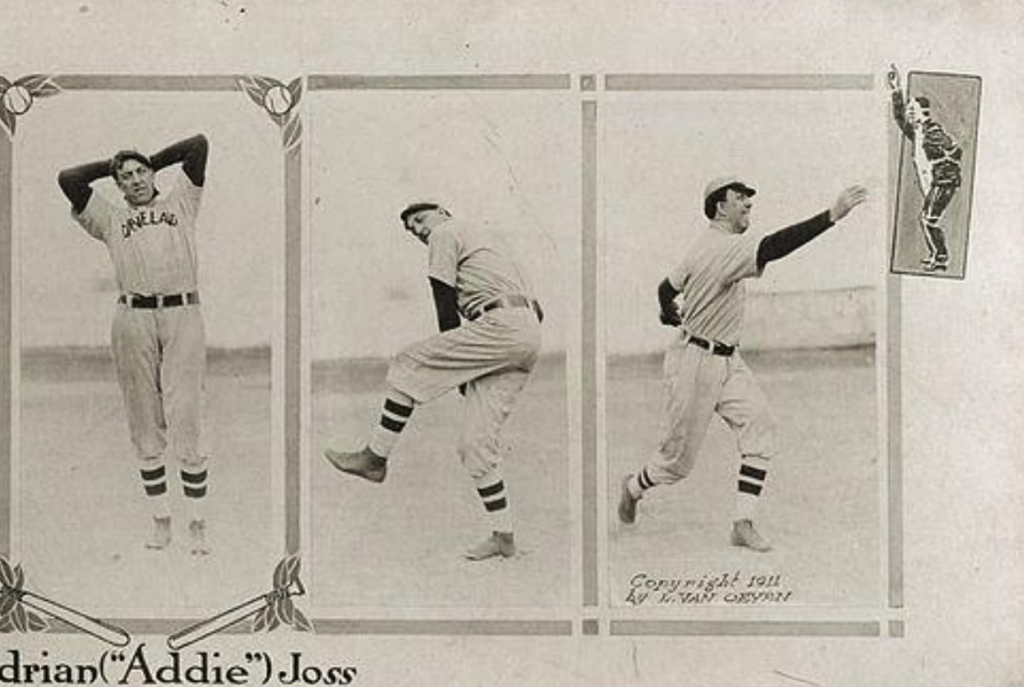
Recognition
In the years following his passing, Addie Joss’s legacy endured as a beacon of inspiration and excellence in the world of baseball. In 1978, Joss was posthumously inducted into the National Baseball Hall of Fame, cementing his place among the game’s immortals. His plaque in Cooperstown serves as a lasting reminder of his remarkable talent, unwavering integrity, and enduring legacy as one of baseball’s true legends.
Addie Joss Stats
Addie Joss, the legendary pitcher whose name is synonymous with excellence on the baseball diamond, left an indelible mark on the sport with his remarkable statistics and accomplishments. As a passionate fan of baseball history, I am continually in awe of Joss’s statistical prowess and the impact it had on the game.
In addition to his sterling ERA, Joss achieved several other notable statistical milestones during his career. He recorded three 20-win seasons, showcasing his ability to deliver dominant performances on the mound year after year. Furthermore, Joss etched his name into baseball lore with two career no-hitters, including a perfect game against the Chicago White Sox in 1908. His flawless outing in that historic game solidified his status as one of the greatest pitchers of his era and endeared him to fans across the country.
Beyond his individual achievements, Joss’s impact on team success cannot be overstated. Throughout his tenure with the Naps, he served as a linchpin of the pitching staff, anchoring the rotation and providing stability and reliability on the mound. His consistent excellence served as a source of inspiration for his teammates and played a pivotal role in the team’s competitive success during his tenure.
However, Joss’s statistical legacy extends far beyond the numbers themselves. His remarkable statistics serve as a testament to his unwavering dedication, resilience, and competitive spirit. Despite facing adversity both on and off the field, Joss remained steadfast in his pursuit of excellence, never allowing setbacks to deter him from his goals.
Moreover, Joss’s statistics serve as a window into the historical context of the game. They offer insights into the evolution of pitching strategy, the competitive landscape of the early 20th century, and the enduring legacy of one of baseball’s most iconic figures. As fans, we have the privilege of delving into Joss’s statistics and appreciating the impact he had on the sport and its rich tapestry of history.
What ERA Does Addie Joss Have?
Addie Joss, the legendary pitcher who played for the Cleveland Bronchos/Naps from 1902 to 1910, boasts one of the most impressive Earned Run Average (ERA) in Major League Baseball history. Throughout his illustrious career, Joss accumulated a remarkable career ERA of 1.89 [9]. This extraordinary statistic solidifies his status as one of the greatest pitchers of his era and underscores his mastery of the pitching craft. Joss’s low ERA is a testament to his exceptional talent, consistency, and ability to stifle opposing batters with his repertoire of pitches. His remarkable ERA remains a defining aspect of his legacy and continues to inspire awe among baseball fans and historians alike.
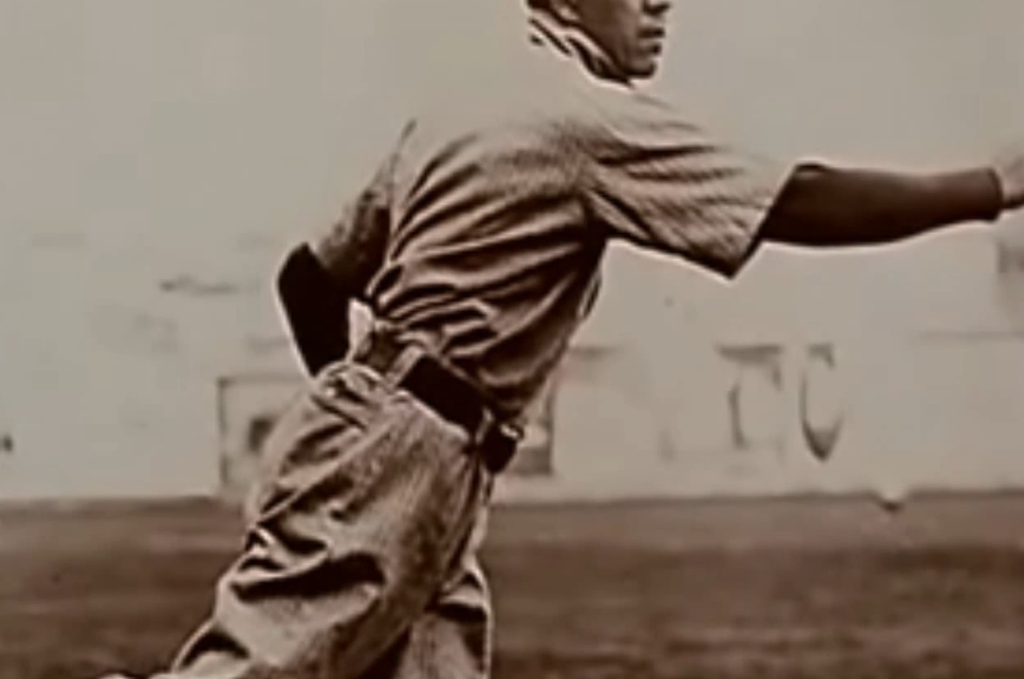
How Could He Improve His ERA:
- Quality Pitching: The most crucial factor in lowering a pitcher’s ERA is consistent quality pitching. A better pitcher will have a more stable ERA, indicating fewer runs allowed per nine innings pitched;
- Trade for Better Pitchers: If you’re a team manager and want to lower your team’s overall ERA, consider trading for pitchers known for their low ERAs;
- Focus on Defense: The defense can have a significant effect on a pitcher’s ERA. By reducing the number of bases the opposing team can reach, the defense can help lower the pitcher’s ERA;
- Use Relief Pitchers Strategically: Relief pitchers often enjoy an advantage in compiling their ERA. Utilizing them strategically can help improve a team’s overall ERA;
- Avoid Unearned Runs: Unearned runs do not count towards a pitcher’s ERA, so focusing on minimizing errors that could lead to unearned runs can help improve a pitcher’s ERA;
Remember, these strategies involve many variables and depend on the specific circumstances of each game. It’s crucial to adapt your approach based on the opponent, the state of the game, and the skills of your pitchers [10].
Addie Joss’ Career Achievements:
During his relatively short career, Joss earned a reputation as one of the era’s most dominant pitchers, and his achievements on the field have left a lasting legacy.
Here are some of the key highlights and achievements of Addie Joss’s career:
- Career Earned Run Average (ERA):Joss finished his career with an ERA of 1.89, which remains the second-lowest in MLB history for pitchers with at least 1,000 innings pitched. This remarkable statistic is a testament to his dominance on the mound and his ability to consistently limit opposing teams’ scoring;
- Perfect Game:On October 2, 1908, Addie Joss pitched a perfect game against the Chicago White Sox, becoming the second pitcher in MLB history at that time to achieve this feat. In this game, he retired all 27 batters he faced without allowing a single base runner, solidifying his place in baseball lore;
- No-Hitter:In addition to his perfect game, Joss also pitched a no-hitter on April 20, 1910, against the Chicago White Sox, making him one of the few pitchers in MLB history to throw both a perfect game and a no-hitter;
- Win-Loss Record:Despite his career being cut short due to health issues, Joss amassed a win-loss record of 160-97. His winning percentage of .623 is among the best for pitchers in the early 20th century;
- Strikeouts and Control:Joss was known for his remarkable control and ability to strike out batters, finishing his career with 920 strikeouts while issuing only 364 walks in 2,327 innings pitched. His strikeout-to-walk ratio was exceptional for his era [11];
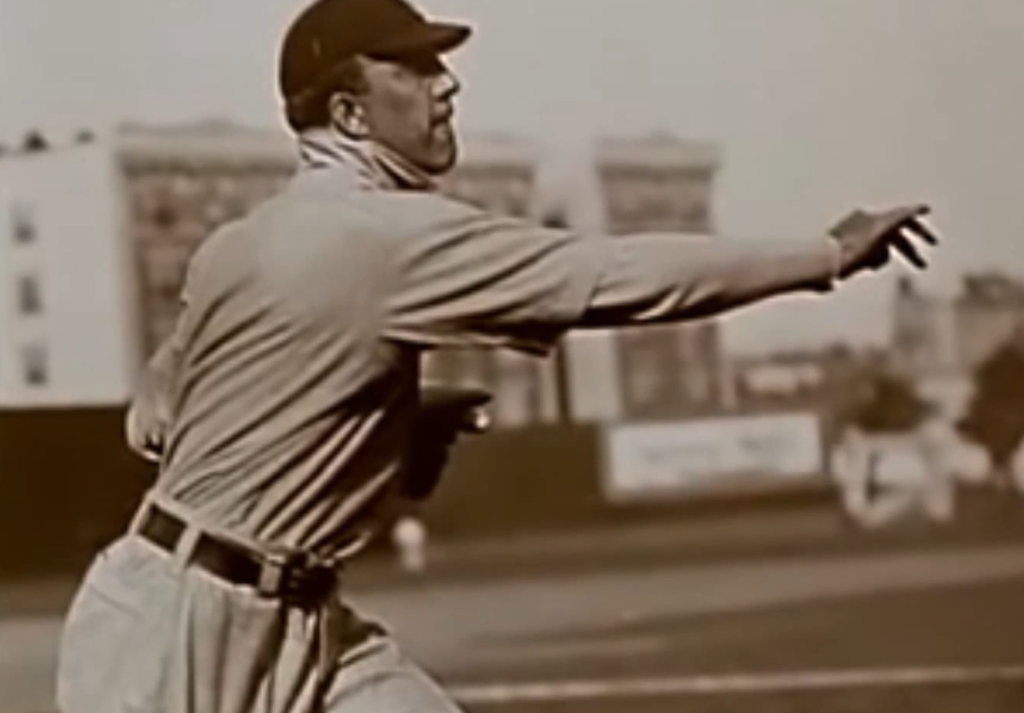
FAQ:
What baseball player died of meningitis?
Addie Joss, the renowned pitcher who played for the Cleveland Bronchos/Naps, tragically passed away from tuberculous meningitis at the age of 31.
What 47-year-old baseball player died?
Addie Joss was not 47 years old when he died. He was 31 years old at the time of his passing.
Is Addie Joss in the Hall of Fame?
Yes, Addie Joss was posthumously inducted into the National Baseball Hall of Fame in 1978, honoring his remarkable contributions to the sport.
How many games did Addie Joss play?
Addie Joss played a total of 286 games over the course of his Major League Baseball career with the Cleveland Bronchos/Naps.
Where is Addie Joss buried?
Addie Joss is buried in the Lake View Cemetery located in Cleveland, Ohio.
Who threw a 74-pitch perfect game in 1908?
Addie Joss achieved the remarkable feat of throwing a perfect game with only 74 pitches against the Chicago White Sox in 1908.
Who is the only woman in the Hall of Fame?
Effa Manley is the only woman to be inducted into the National Baseball Hall of Fame. She was recognized for her significant contributions to the sport as an owner and executive in the Negro leagues.
Who was removed from the Hall of Fame?
As of now, no individual has been formally removed from the National Baseball Hall of Fame.
What is the hardest Hall of Fame to get into?
The National Baseball Hall of Fame, located in Cooperstown, New York, is often considered one of the most prestigious and difficult Hall of Fames to gain entry into due to its stringent selection criteria.
Has a female ever played in the MLB?
No female player has competed in Major League Baseball. However, there have been women who have played professionally in men’s minor league baseball and independent leagues.
What was Addie Joss’s career Earned Run Average (ERA)?
Addie Joss boasted an extraordinary career ERA of 1.89, the second-lowest in Major League Baseball history. This statistic underscores his mastery of the pitching craft and his ability to consistently outmaneuver opposing batters.
How many no-hitters did Addie Joss throw in his career?
Addie Joss threw two career no-hitters, including a perfect game in 1908. His exceptional pitching performances solidified his reputation as one of the greatest pitchers of his era.
What team did Addie Joss play for throughout his Major League career?
Addie Joss played his entire Major League career with the Cleveland Bronchos/Naps from 1902 to 1910. He established himself as a cornerstone of the team’s pitching staff and a beloved figure among fans in Cleveland.
What was the cause of Addie Joss’s untimely death?
Addie Joss tragically succumbed to tuberculous meningitis, a devastating illness, at the age of 31. His passing left a void in the baseball world and cast a shadow over the sport he loved.
Useful Video: The Remarkable Addie Joss
References:
- https://en.wikipedia.org/wiki/Addie_Joss
- https://baseballhall.org/hall-of-famers/joss-addie
- https://sabr.org/bioproj/person/addie-joss/
- https://case.edu/ech/articles/j/joss-adrian-addie
- https://www.mlb.com/player/addie-joss-116772
- https://www.angelfire.com/tx2/dickiethon/joss.html
- https://en.wikipedia.org/wiki/Addie_Joss%27_perfect_game
- https://www.fangraphs.com/players/addie-joss/1006630/stats?position=P
- https://bleacherreport.com/articles/71012-a-true-fan-favorite-the-story-of-addie-joss
- https://www.baseball-almanac.com/players/player.php?p=jossad01
- https://www.foxsports.com/stories/mlb/cleveland-indians-forgotten-stars-addie-joss






Leave a Reply